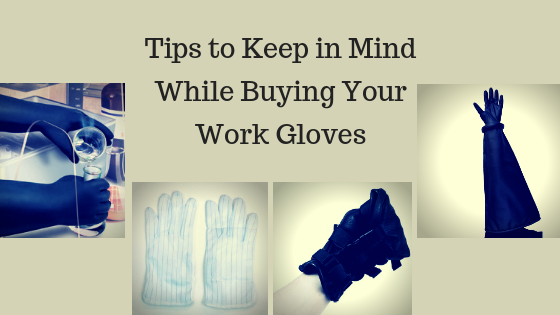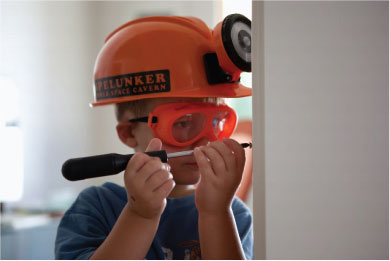We all have a favorite tool, maybe it is that new Lithium-Ion powered cordless drill, it might be a new air compressor for powering all of your pneumatic tools, or it might be an old set of wrenches that you’ve had since you were a teenager and bought your first car. But no matter what your favorite tool is and what tools you use each day to make a living, you have to invest in the right pair of gloves to protect your most important tools- your hands.
Chances are that if you work for a large company, there are regulations and programs put in place by the safety coordinator or safety manager. Depending on what kind of job you do, you might use many different types of gloves to protect your hands. If you work for a smaller company or are a DIY’er, you may not have any expertise on the subject or mandated regulations. It is up to you to protect yourself.
Like any other type of safety gear, hand protection come in all shapes and sizes and are often specific to what type of job is at hand. Depending on what type of job you are doing will determine the proper glove for the task. Gloves will be divided into different categories such as cut resistant, chemical resistant, insulated, arc protection, high temperature, general purpose and many specialized gloves. The most important thing to remember is that you must use the correct glove for the job and you should have a basic understanding of why that glove is the right choice, not just because somebody told you to wear it.
1. Cut Resistant. Cut resistant doesn’t mean cut proof. There are many degrees of protection, depending on what glove you chose. Most of the cut resistant gloves will be a mix of material, usually coated on the palm with extra protection such as Nitrile or Polyethylene. They may be cloth mixed with rubber or Kevlar. These gloves are going to be used for handling parts with sharp or pointed edges such as sheet metal of glass or tile. They will be puncture resistant and protect your hands from cuts and scrapes.
2. Chemical Resistant. Usually made of rubber, Nitrile or PVC, chemical resisatnat gloves are going to protect the worker form harmful chemicals. They are often longer cuffed gloves, protecting past the wrist and can even be elbow or shoulder length depending on the required needs. They are going to protect against oil, grease, acids, alcohol and solvents. They are used in mining, utilities, manufacturing and the automotive industries.
3. Insulated. These gloves are going to protect from electric shock and are very important for the safety of lineman, electrical utilities and electrical workers. It is very important to verify voltage protection and to inspect for cracks and tears before each use. These will be very specific to a job and most people will never need this type of glove.
4. Arc Protection. Arc protection gloves are going to be made of Kevlar and Nitrile. They are going to be cut and flame resistant and are used in facility work, machinery work, and heavy equipment service and cable installation.
5. High Temperature. High temperature gloves are exactly what they appear to be, they are going to protect the worker from being burned. These gloves will protect form burns and high temperatures, usually with a cotton or Nitrile blend. They are used in production of glass and plastics, foundry operations, steel mills and in the automotive industry.
6. Disposable Gloves. Latex and Nitrile disposable gloves fit into this category. They may be used in laboratory, medical and janitorial applications. They are good for protection, but are thin and allow for greater dexterity.
7. General Purpose. This is a broad category; it is going to include any of the gloves that you may use in a job that isn’t inherently dangerous, such as yard work, driving, working around the house. These are gloves to protect from blisters, splinters and other common problems on the job.
There is a glove for just about any job that needs to get done. Workers are injured every day because they are not wearing the proper hand protection and it is often left to the individual using the glove to decide what is appropriate for the job. Just like you would always put on a pair of safety glasses to protect against eye injury, hand protection should be available at all times and in every tool box.
Bio: Jay Preston is author and Brand Manager for ToolHQ, Australia’s premiere cordless tool source.
Thanks, Jay for this thorough explanation of the types of gloves. For anyone who wants to protect their hands, depending on the right glove for the job, check Texas America Safety Company for just the right type.


![[gickr.com]_2b270b77-6afd-1604-e976-f132e393214e Different styles of gloves available](http://www.blog4safety.com/wp-content/uploads/2009/07/gickr.com_2b270b77-6afd-1604-e976-f132e393214e.gif)
